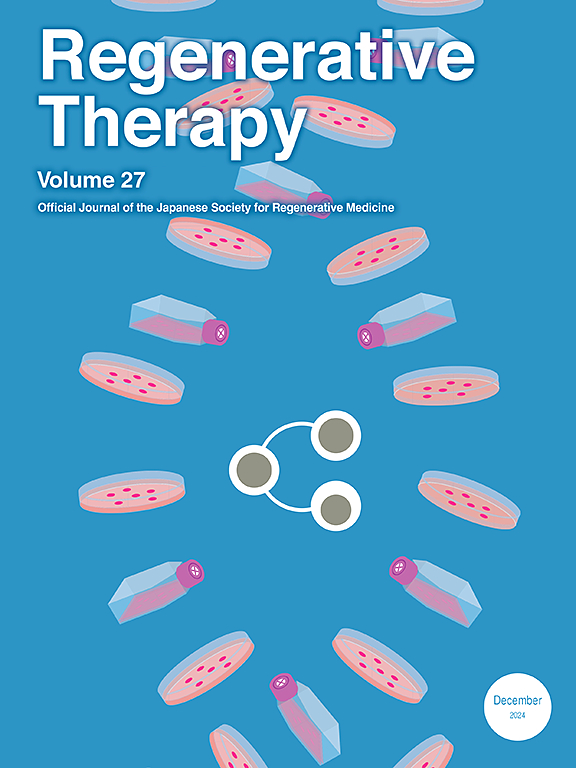以最小的污染优化人员流动:开发和验证用于细胞产品处理的空气屏障洁净室
IF 3.5
3区 环境科学与生态学
Q3 CELL & TISSUE ENGINEERING
引用次数: 0
摘要
再生医学的细胞处理设施需要严格防止交叉污染。然而,由于采暖、通风和空调(HVAC),通常采用密封的多房间布局增加了能源需求和资本成本,并限制了员工的流动性。我们设计了一个半开放式(SO)洁净室,消除了细胞处理室(CPR)和相邻走廊之间的门,同时保持单向气流作为屏障。本研究严格比较了四种不同的界面——平开口、翼墙、推拉式通风和传统的旋转门,以验证在不影响cpr -走廊界面颗粒含量性能的情况下,是否可以实现操作灵活性。方法计算流体力学(CFD)模拟再现了两个相连的房间,由一个900 × 2000-mm2的开口隔开,以23 m3/min(每小时换气35次)的速度连续供气。评估了四个界面:普通开口,100-500毫米翼墙面板,推拉通风调节到0.75比率,以及传统的旋转门。1米/秒的交叉通风模拟人员运输。制作了完全相同的全尺寸模型;粒子图像测速(PIV)量化了气流矢量,光学计数器记录了0.5 μm气溶胶在5分钟内的进出情况。主要终点是入口颗粒浓度比和累积的相邻室转移比。结果scfd显示,所有布局漏损≤0.011%,行走吃水1 m/s,推挽流保持在0.05%以下,500 mm翼壁性能降低一半,优于普通开孔。PIV证实,在出口情况下,各工况下的气流速度分布存在显著差异。在出入口两种情况下,无门的半开放式布局中指向前方相反方向的矢量所占比例均低于常规布局。粒子计数支持这一点:推拉在出口转移了0.013%的粒子,在入口转移了32.8%,总体迁移到相邻房间的比例为0.0043%。SO洁净室概念抑制了cpr -走廊界面颗粒含量的波动,同时消除了物理门,实现了灵活的人员流动,避免了额外的暖通空调区域。推挽式通风系统对行走引起的干扰提供了最强大的遏制,而500毫米的翼墙则提供了一种被动的、无动力的替代方案,具有适度的保护作用。SO设计可合理替代传统的闭门房间,在最坏情况下房间间传输量低于0.05%,大大降低再生医药制造的能源和建筑成本。本文章由计算机程序翻译,如有差异,请以英文原文为准。
Optimized personnel flow with minimal contamination: development and validation of an air-barrier cleanroom for cell products processing
Introduction
Cell processing facilities for regenerative medicine require strict prevention of cross-contamination. However, the typically employed sealed, multi-room layout increases energy demands and capital costs due to heating, ventilation, and air-conditioning (HVAC), and restricts staff mobility. We devised a semi-open (SO) cleanroom that eliminated doors between the cell processing room (CPR) and adjoining corridor, while maintaining unidirectional airflow as a barrier. This study rigorously compared four interface variants—plain opening, wing walls, push–pull ventilation, and a conventional swing door—to verify whether operational flexibility can be achieved without compromising particle content performance at the CPR–corridor interface.
Methods
Computational fluid dynamics (CFD) simulations reproduced two connected rooms separated by a 900 × 2000-mm2 opening, supplied at 23 m3/min (35 air changes per hour) constantly. Four interfaces were evaluated: plain opening, 100–500 mm wing-wall panels, push–pull ventilation adjusted to a 0.75 ratio, and a conventional swing door. A 1-m/s cross-draft emulated personnel transit. Identical full-scale mock-ups were built; particle image velocimetry (PIV) quantified airflow vectors, and optical counters logged 0.5-μm aerosols during 5-min exit and entry. The primary endpoints were the inflow particle concentration ratio across the opening and the cumulative adjacent-room transfer proportions.
Results
CFD showed all layouts leaked ≤0.011 %, with a 1 m/s walking draft, push–pull kept inflow below 0.05 %, halving 500-mm wing-wall performance and outperforming plain openings. The PIV confirmed significant differences in airflow velocity distributions under each condition in the case of the exit. The semi-open layout without doors showed a lower proportion of vectors pointing opposite to the forward direction than the conventional layout in both the exit and entry cases. Particle counts supported this: push–pull transferred 0.013 % of particles on exit, 32.8 % on entry, giving overall migration to the adjacent room of 0.0043 %.
Conclusions
The SO cleanroom concept suppresses fluctuations in particle content at the CPR–corridor interface while eliminating physical doors, enabling flexible personnel flow and obviating extra HVAC zones. Push–pull ventilation delivered the most robust containment against walking-induced disturbances, whereas the 500-mm wing walls offered a passive, power-free alternative with moderate protection. With worst-case inter-room transfers below 0.05 %, SO designs can rationally replace conventional door-sealed rooms, substantially reducing energy and construction costs in regenerative medicine manufacturing.
求助全文
通过发布文献求助,成功后即可免费获取论文全文。
去求助
来源期刊

Regenerative Therapy
Engineering-Biomedical Engineering
CiteScore
6.00
自引率
2.30%
发文量
106
审稿时长
49 days
期刊介绍:
Regenerative Therapy is the official peer-reviewed online journal of the Japanese Society for Regenerative Medicine.
Regenerative Therapy is a multidisciplinary journal that publishes original articles and reviews of basic research, clinical translation, industrial development, and regulatory issues focusing on stem cell biology, tissue engineering, and regenerative medicine.
 求助内容:
求助内容: 应助结果提醒方式:
应助结果提醒方式:


